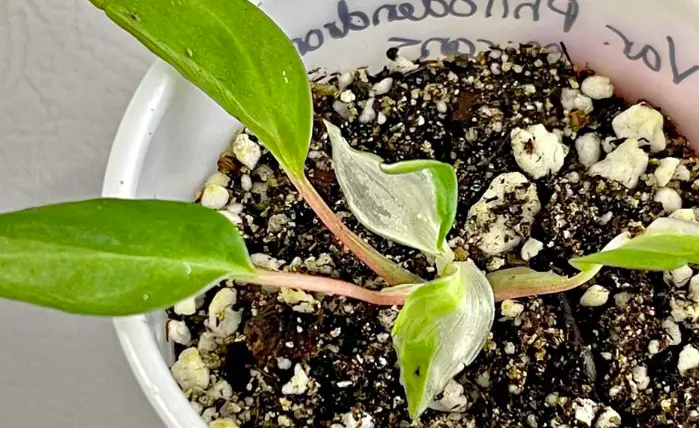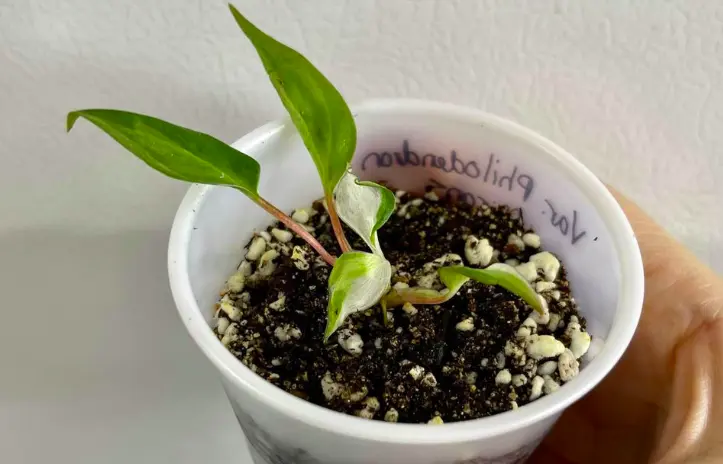Variegated micans are a newly popular horticultural plant that has been developing in popularity in recent years. Variegations vary across species, but they come in many different colors. Micans are tropical flowers that look stunning against a green background- they are used in traditional Hawaiian bouquets. This plant starts blooming later than other varieties and spends its days as a shrub.
This article will cover all the important details needed in growing and caring for these beautiful flowers.
What are Variegated Micans?

Variegated micans are a popular house plant that can add abundant green foliage to your interior environment. This plant is a species of spiderwort that is native to Mexico. The plant leaves are striped with different shades of green, giving it a variegated appearance. The plant is also known for regenerating new leaves quickly if damaged.
A moist, well-drained soil and partial shade are ideal conditions for variegated micans. It is tolerant of many soil types but does not do well in dry or wet conditions. The plant can be propagated by division or stem cuttings and spread if given the right conditions.
Although pruning is unnecessary, it can help control the plant’s size and shape. Variegated micans are generally low-maintenance plants that are relatively pest and disease-free. However, mealybugs and aphids can be problematic if the plant is not kept clean and debris-free.
Types of Micans Varieties
Philodendron micans are a large genus of plants in the Araceae family. They come in various sizes and shapes, and each one might seem very distinct. There are many different types of micans, all with their unique colors and patterns. Some of the most popular varieties include:
Yellow Micans
Another popular variety, yellow micans, is known for its bright coloring and is perfect for adding a bit of sunshine to any room.
P. verrucosum
When mature, Philodendron verrucosum has dark-green, velvety leaves with light green veining. Even the lower parts of their leaves, a faded crimson in between the veins, show the plant’s ability to adapt to its native tropical environment.
Red Micans
These are one of the most popular types of micans and are known for their bright red coloring. They are perfect for adding color to any garden or home.
P. hastatum
Philodendron hastatum has shiny, silvery leaves, making it commonly known as Silver Sword Philodendron. It has long leaf blades and a slender-pointed heart-to-arrowhead shape. It is grey-blue to grey-green.
Orange Micans
As their name suggests, these micans are orange and perfect for adding a touch of brightness to any space.
P. brasil
This plant grows swiftly and readily as a vining plant. Its exquisite heart-shaped foliage is dark green with gold variegation in the center. This trailing plant looks fantastic on bookshelves or in a plant hanger where the tendrils can ‘spill.’
Green Micans
Green Micans make a great addition to any space if you’re looking for a pop of color without going overboard. They contrast nicely with other colors and can brighten up a room.
Blue Micans
Blue micans are beautiful and unique and can make a statement in any space. They also are one of the rarer varieties of micans, so if you can find them, they make a great addition to any collection.
Growing Requirements for Variegated Micans

Temperature and Humidity
Micans are tropical plants, so they prefer warm temperatures and high humidity. Placing your plants on a pebble tray or grouping them with other plants can raise the humidity around them if your house is dry.
Light
When it comes to light, micans do best in indirect sunlight. They will scorch if they receive too much direct sunlight, so place them somewhere that gets bright light but not direct sunlight. These plants are tolerant of a range of light conditions, so if you need help finding a perfect spot, don’t worry too much about it. Avoid placing them in dark corners where they won’t get any light.
Fertilizing
Fertilizing your variegated micans is important to keeping them healthy and growing well. When the growing season begins (spring and summer), fertilize every two weeks. Once the growing season ends (fall and winter), fertilize only once a month. Be sure to follow the packaging instructions carefully so you don’t overdo it – too much fertilizer can damage your plant’s roots.
Water
Once the top 2-3 inches of soil have dried off, water your variegated micans. Another simple method to detect whether your plant needs water is to look at its leaves: when it is thirsty, the leaves will begin to droop and curl inwardly. Because these plants are susceptible to overwatering, never let the roots sit in water for too long.
Pruning
Regular pruning will help keep your variegated micans from becoming leggy since pruning promotes the stems to branch. Because variegated micans are aggressive growers, spring and summer are the optimum periods to prune them. Trim any exceptionally lengthy stems with a pair of disinfected pruning shears. Most importantly, save any stem clippings since you can still use them for propagation.
Soil
Variegated micans thrive on moist, airy, and well-draining soil rich in organic matter. You can get the best results by mixing equal amounts of perlite, potting soil, orchid bark, and coco coir or peat moss. This combination will help create an excellent potting mix for your variegated micans to flourish.
How to Grow Variegated Micans
The easiest way to propagate variegated micans is through stem cuttings, and here’s how to do it:
- You’ll need a pot at least 6 inches deep with drainage holes.
- Take stem cuttings from robust philodendron micans using pruning shears or a pair of sharp scissors, ensuring each cutting has roughly 4-5 leaves.
- Remove two leaves from the bottom of each stem cutting to display the nodes along the stem.
- Soak the stem cuttings in water, ensuring only the naked stem is soaked, and then set the cuttings in a spot with moderate to bright indirect light.
- Within a few weeks, roots should begin to emerge. Check the water level regularly to ensure the nodes on the bare stem are always immersed.
- Plant the cuttings in soil when the roots are at least an inch long.
- Moisten the soil before planting the cuttings, and then bury the roots.
- Keep the soil regularly moist (but never soaked) for the first 1-2 weeks to let the cuttings adapt.
- Place your plant in the pot and fill it with a well-draining potting mix. Water your plant thoroughly, and then wait for the soil to dry before watering again.
Pros and Cons of Variegated Micans
Growing variegated micans has both positives and negatives, as with any plant. Some pros include that they are relatively low maintenance, Hardy, easy to propagate, and make an excellent ground cover. They also have unique and beautiful foliage ranging in color from green to burgundy.
However, some cons to consider are that they can be prone to fungal diseases, their leaves may scorch in full sun, and they require well-draining soil. Overall, variegated micans make a great addition to any garden as long as you know their potential drawbacks.
Caring for Variegated Micans
Variegated micans are a unique plant that is easy to care for. To keep your plants healthy and vibrant, follow these tips:
- Place the plant where it will receive bright, indirect sunlight.
- Water the plant when the soil’s top inch feels dry. Allow the water to drain completely before placing back in its decorative container.
- Fertilize monthly using a balanced liquid fertilizer diluted by half.
- To encourage compact growth, pinch back tips as needed.
With proper care, your variegated micans will bring beauty and life to your home for years to come!
Pests and Diseases of Variegated Micans
Variegated micans are relatively resistant to pests and diseases, but a few can cause problems for your plant. Spider mites, aphids, and mealybugs can all infest variegated micans and cause leaf drops and stunted growth. Using an insecticide or miticide immediately if you see any of these pests on your plants will help you control them.
Powdery mildew is another problem that can affect variegated micans. This fungal disease appearance of fuzzy white patches on leaves and stems may eventually lead to leaf drop. You can use a fungicide designed for this disease to treat powdery mildew.
With their striking leaves and easy care requirements, variegated micans make excellent houseplants. Following this guide’s tips, you can grow and care for your variegated micans. With a little patience and attention, you’ll have a beautiful plant that will add life to your home for years.
